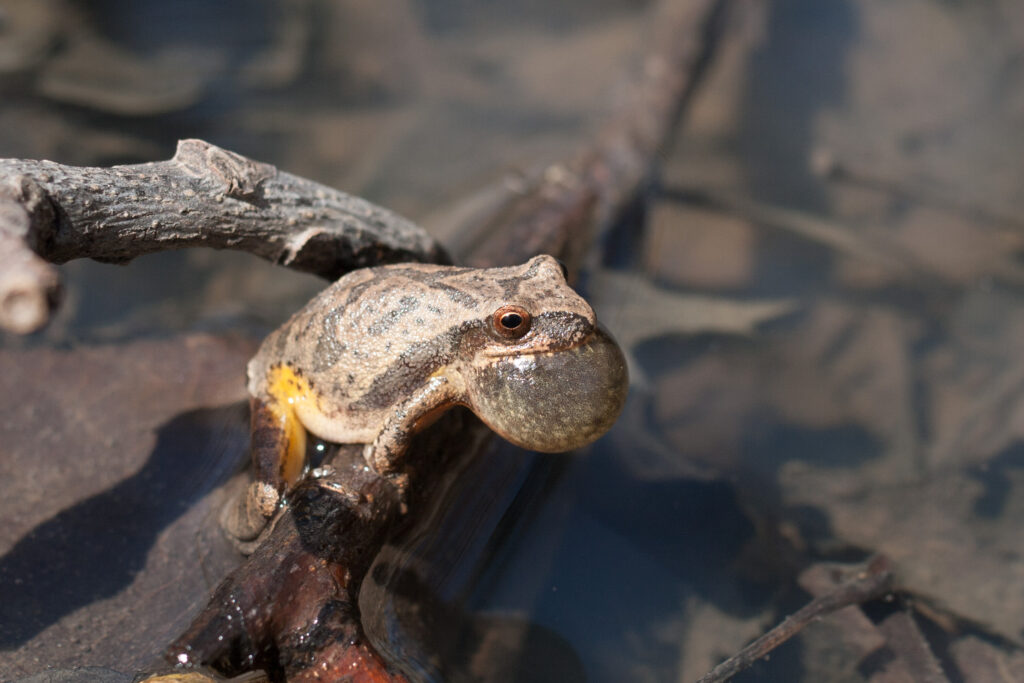As the world turns and the calendar flips, we find ourselves amid a leap year. An extra day is added to our usual 365-day cycle to keep our modern-day calendars in sync with the Earth’s revolutions around the sun.
While this rare occurrence may seem like a mere adjustment to our timekeeping system, it serves as a reminder of the intricate dance between celestial bodies and the rhythms of life on our planet. In this leap year, let us leap into the captivating world of frogs, creatures whose existence is intricately tied to the cycles of nature and whose presence is a testament to the wonders of biodiversity.
Frogs are among the most ancient and diverse groups of vertebrates on Earth, with over 6,000 species inhabiting a variety of ecosystems across the globe. From tropical rainforests to arid deserts, frogs have adapted to thrive in nearly every imaginable habitat. Their evolutionary success is a testament to their remarkable ability to exploit wet and dry ecological niches.
One attribute popularly associated with frogs is their slimy exterior. Moisture is critical to a frog’s survival. Though they have lungs, frogs rely on the extra oxygen absorbed and carbon dioxide released through the skin. Their skin also takes in water to the point where these amphibians do not need to drink. Frogs constantly secrete a layer of mucus to maintain these two vital functions. They shed their skin regularly which looks a little like the acrobatic twists we make to squeeze out of a tight sweater. Unlike our relationship with sweaters, frogs sometimes eat the excess skin.
Though their diet is nothing special for an amphibian, the way they catch and eat prey is extraordinary. Frogs will generally dine on any living thing that will fit into their mouths. Depending on the size of the frog, this could be insects, worms, small fish, or even, in the case of the massive Argentine horned frog, rodents, and lizards. While not all frogs have the quintessential long sticky tongue, those that do can deploy and retract it in 15/100th of a second. Some frog species’ eyes have an auxiliary function of helping force food down their throat by sinking through openings in the skull.
As temperatures rise and spring arrives, signaling the end of winter’s chill, frogs emerge from dormancy to embark on their annual breeding rituals. In many species, males congregate at breeding sites, where they produce a symphony of calls to attract potential mates. These choruses, heard on warm spring evenings, serve not only as a testament to the males’ virility but also as a crucial means of communication in the search for suitable partners.
Fascinating frog features include their vital role in the ecosystem. As tadpoles, they regulate potentially harmful algae blooms. As adults, they eat insects that can transmit deadly diseases. Throughout their entire lifecycle, frogs are a common source of nutrition for a wide variety of animals, playing an integral part in the food web.
Life without frogs would have cascading detrimental effects throughout an entire ecosystem. Despite their resilience, frogs’ numbers continue to decline due to habitat loss, invasive species, pollution, and climate change. Amphibian declines have been documented on every continent except Antarctica, highlighting the urgent need for conservation efforts to protect these charismatic creatures and the ecosystems they inhabit.
This leap year, consider the humble frog, not just as a cute theme, but as a diverse species fundamentally bound to our shared environment. An animal worthy of an extra day of observation and celebration.
Photo: Spring Peeper by Justin Meissen
Kelley V. Phillips is the Assistant Director for Red-tail Land Conservancy. She strives to cultivate wonder in nature and action to protect it.




